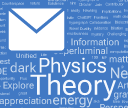Read Stephen Wolfram’s Reddit AMA about this essay »

The Pursuit of Productivity
I’m a person who’s only satisfied if I feel I’m being productive. I like figuring things out. I like making things. And I want to do as much of that as I can. And part of being able to do that is to have the best personal infrastructure I can. Over the years I’ve been steadily accumulating and implementing “personal infrastructure hacks” for myself. Some of them are, yes, quite nerdy. But they certainly help me be productive. And maybe in time more and more of them will become mainstream, as a few already have.
Now, of course, one giant “productivity hack” that I’ve been building for the world for a very long time is the whole technology stack around the Wolfram Language. And for me personally, another huge “productivity hack” is my company, which I started more than 32 years ago. Yes, it could (and should) be larger, and have more commercial reach. But as a nicely organized private company with about 800 people it’s an awfully efficient machine for turning ideas into real things, and for leveraging what skills I have to greatly amplify my personal productivity.
I could talk about how I lead my life, and how I like to balance doing leadership, doing creative work, interacting with people, and doing things that let me learn. I could talk about how I try to set things up so that what I’ve already built doesn’t keep me so busy I can’t start anything new. But instead what I’m going to focus on here is my more practical personal infrastructure: the technology and other things that help me live and work better, feel less busy, and be more productive every day. Continue reading










 We’ve always got a large pipeline of R&D underway, and our strategy for .1 versions is to use them to release everything that’s ready at a particular moment in time. Sometimes what’s in a .1 version may not completely fill out a new area, and some of the functions may be tagged as “experimental”. But our goal with .1 versions is to be able to deliver the latest fruits of our R&D efforts on as timely a basis as possible. Integer (.0) versions aim to be more systematic, and to provide full coverage of new areas, rounding out what has been delivered incrementally in .1 versions.
We’ve always got a large pipeline of R&D underway, and our strategy for .1 versions is to use them to release everything that’s ready at a particular moment in time. Sometimes what’s in a .1 version may not completely fill out a new area, and some of the functions may be tagged as “experimental”. But our goal with .1 versions is to be able to deliver the latest fruits of our R&D efforts on as timely a basis as possible. Integer (.0) versions aim to be more systematic, and to provide full coverage of new areas, rounding out what has been delivered incrementally in .1 versions.

